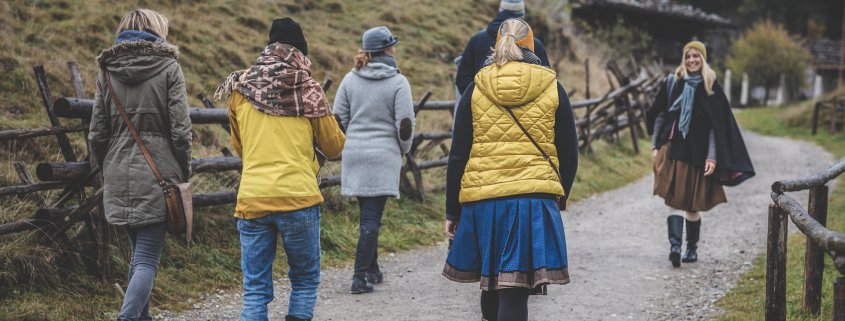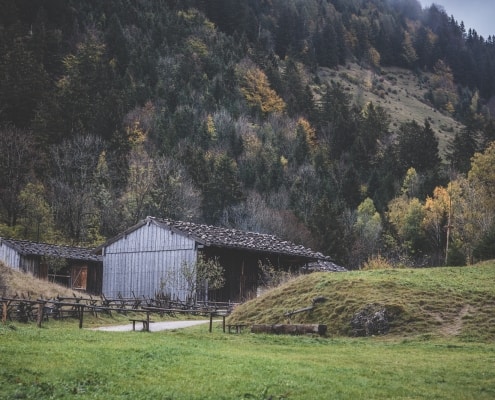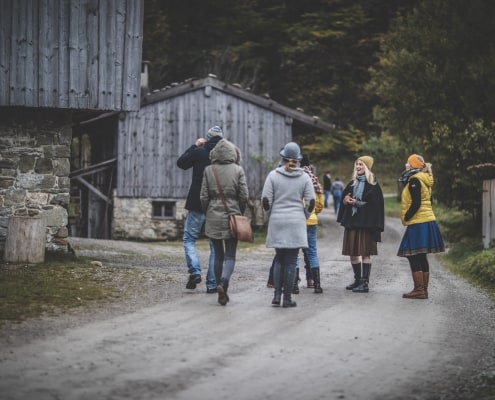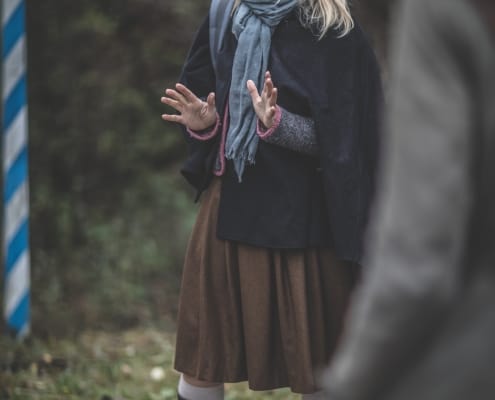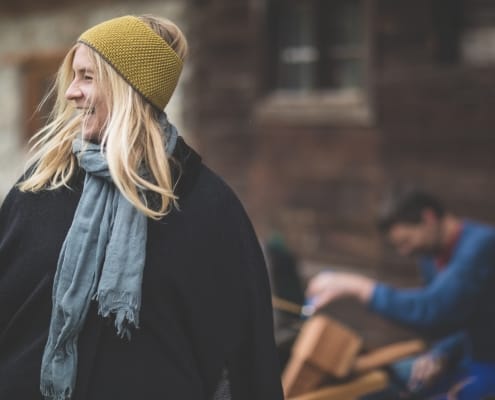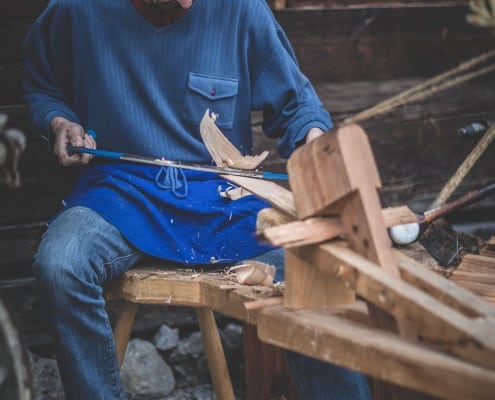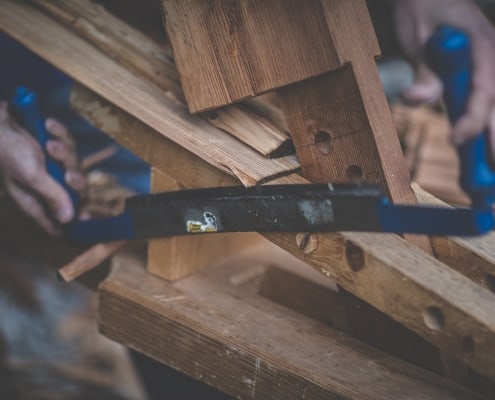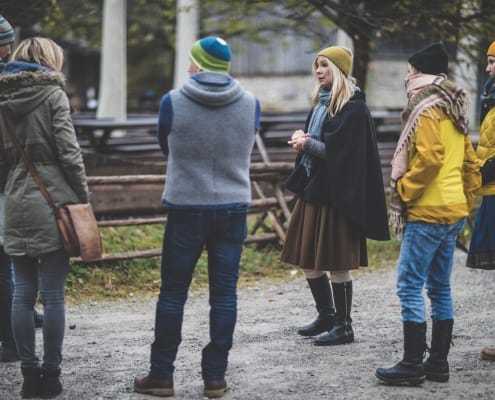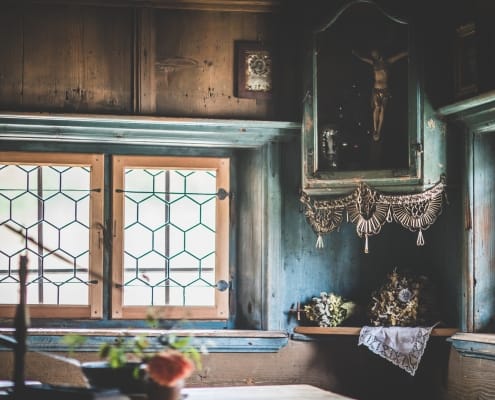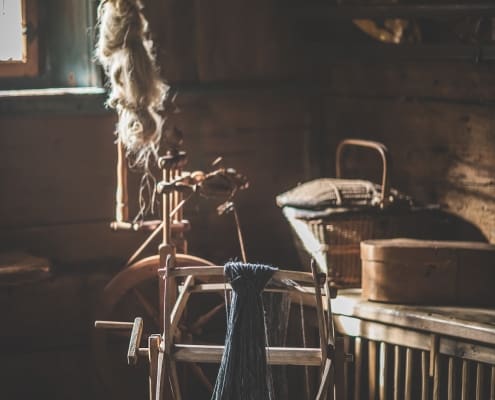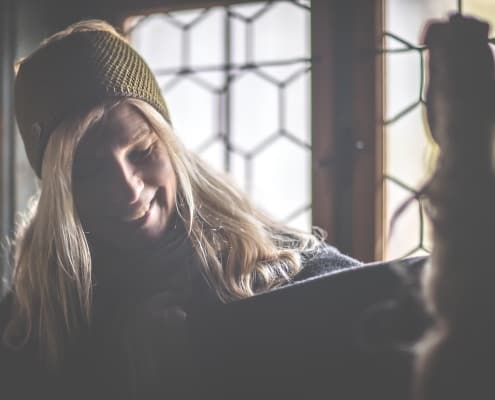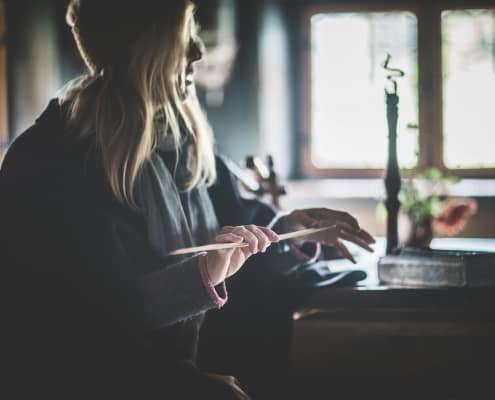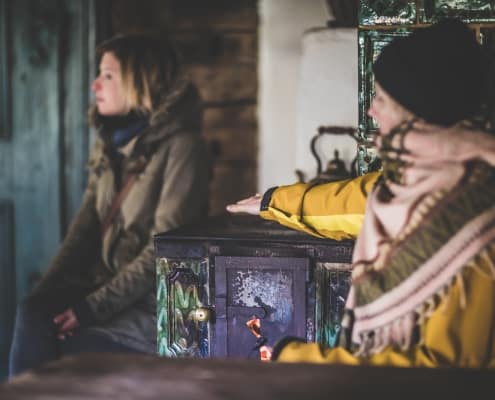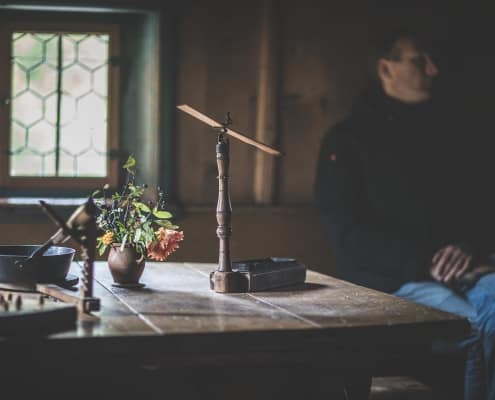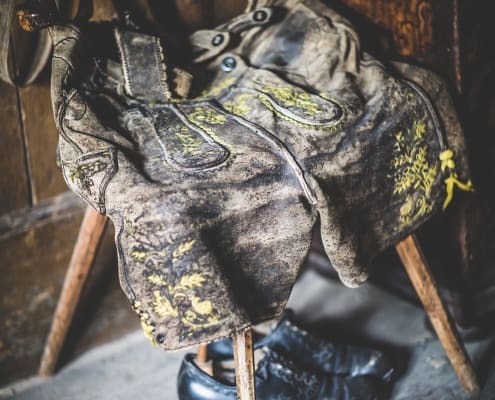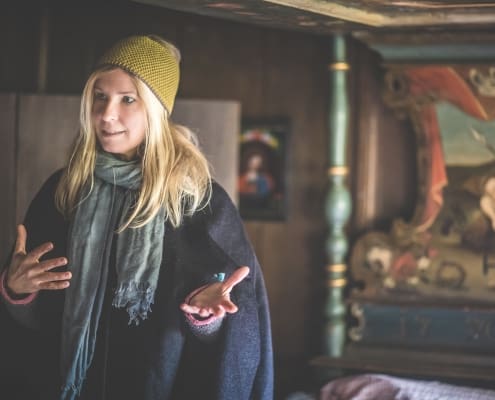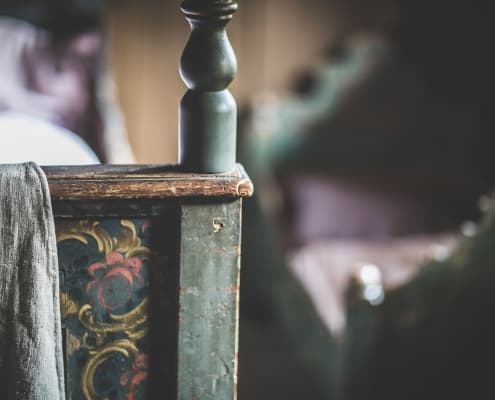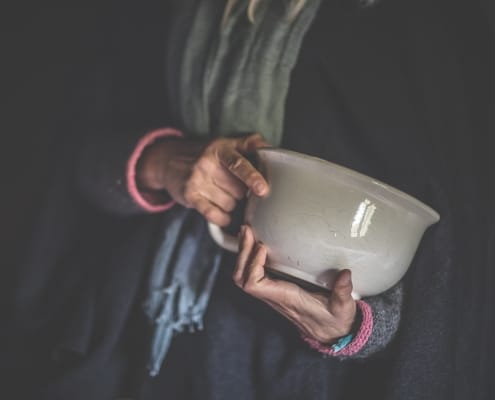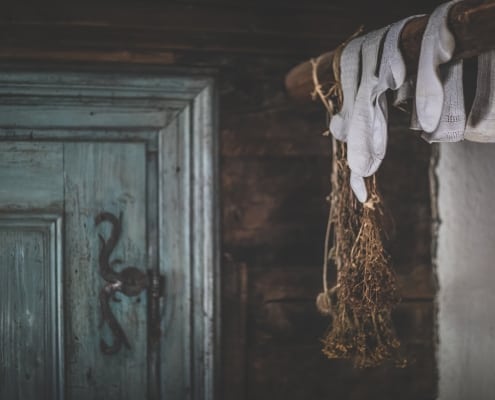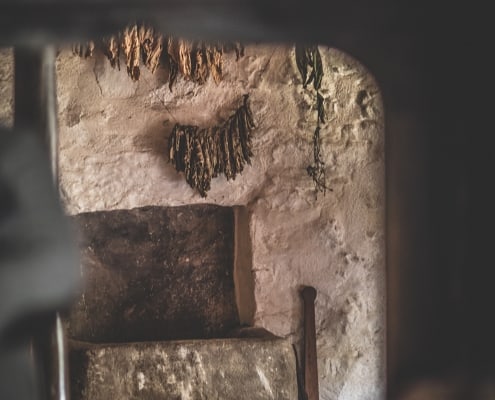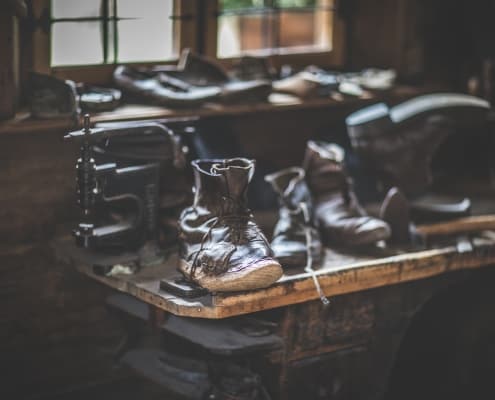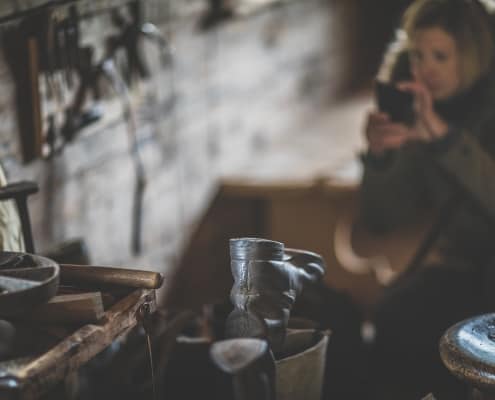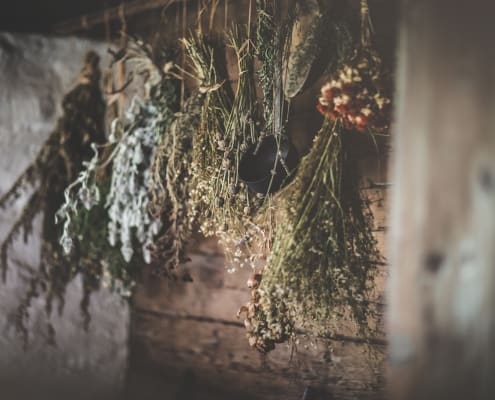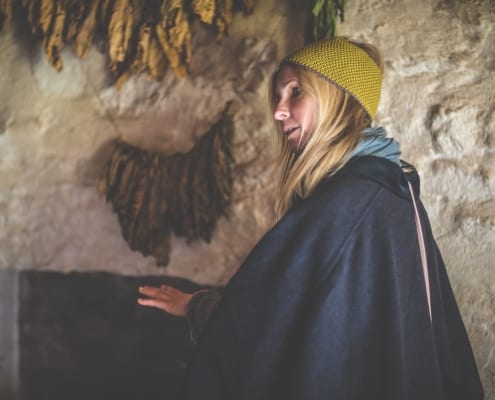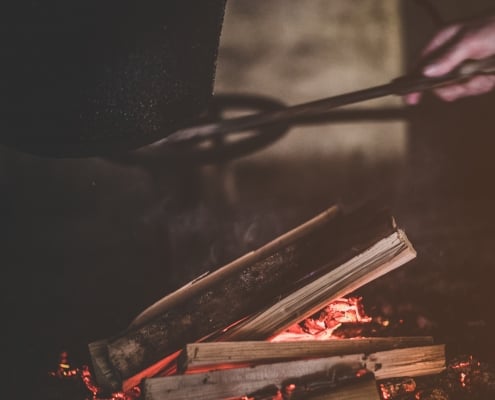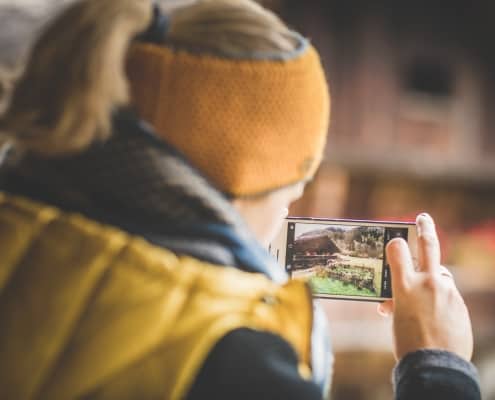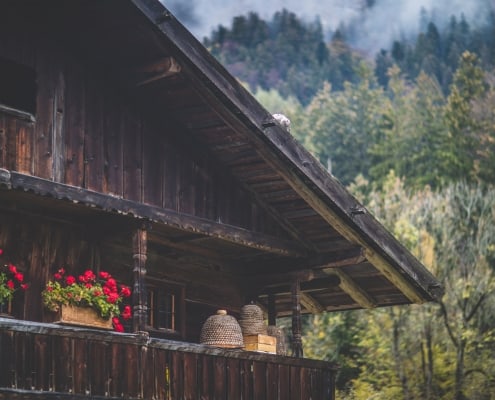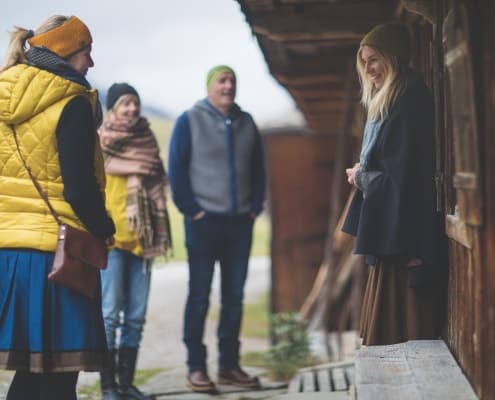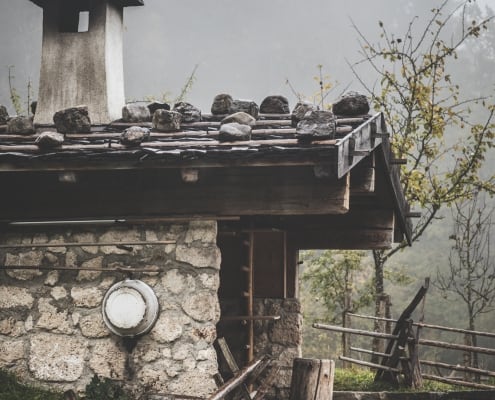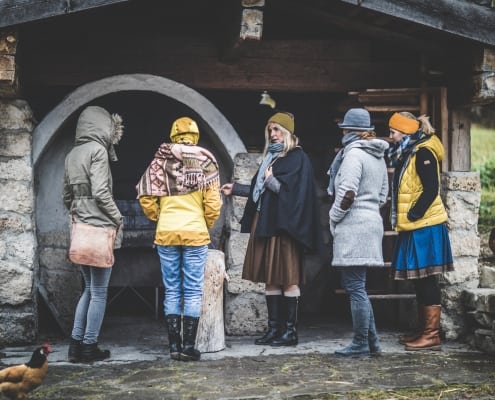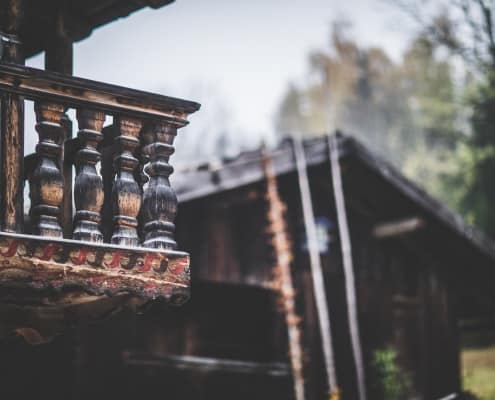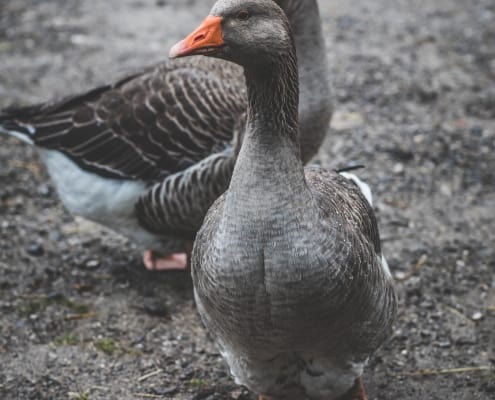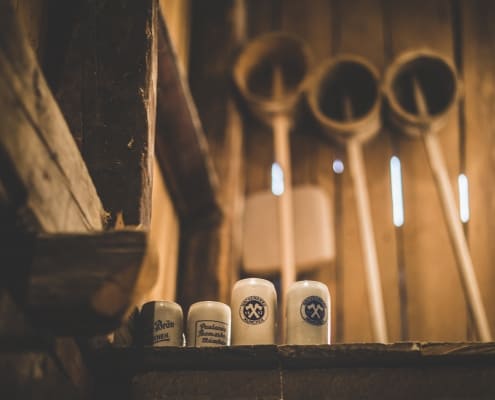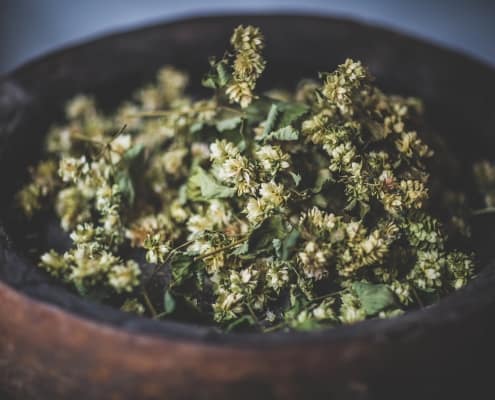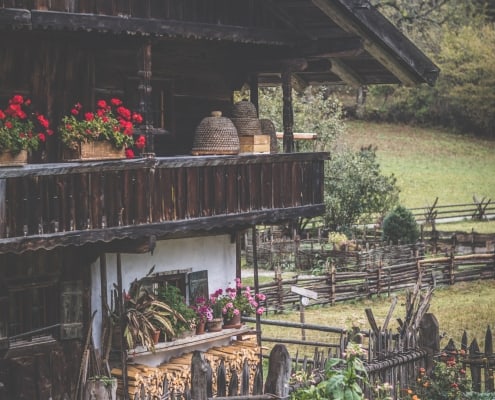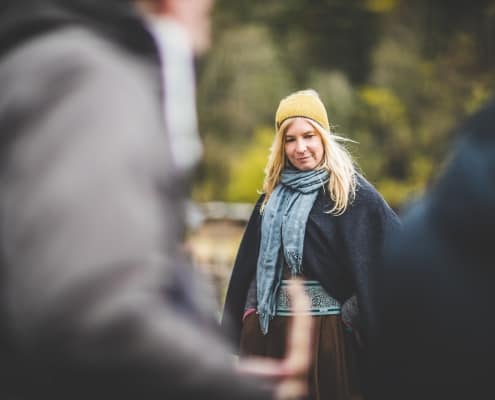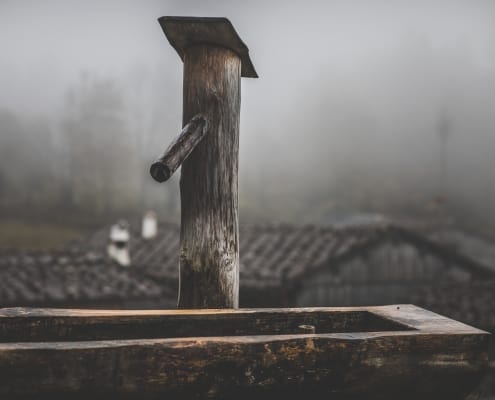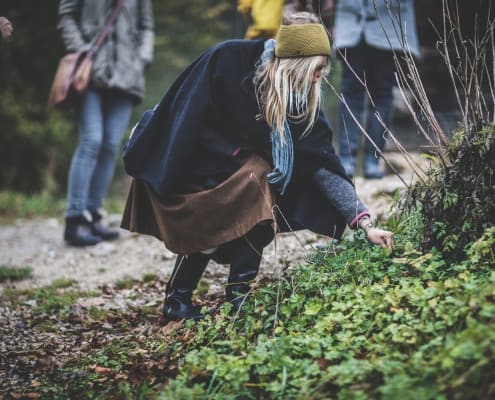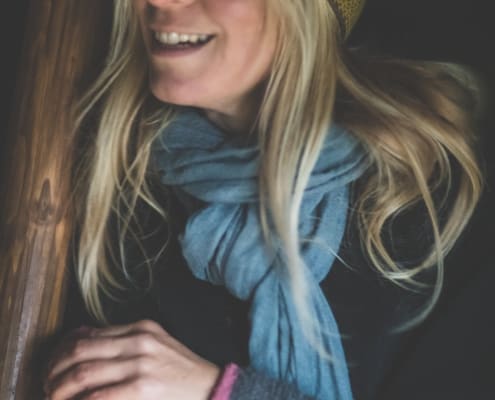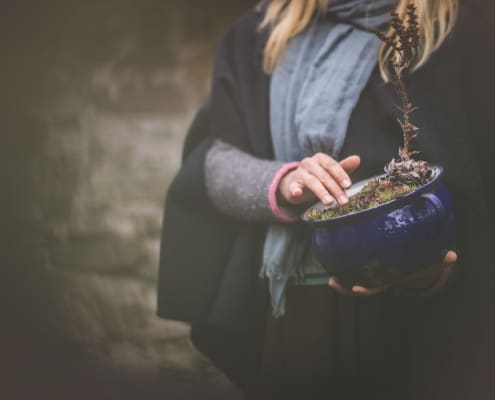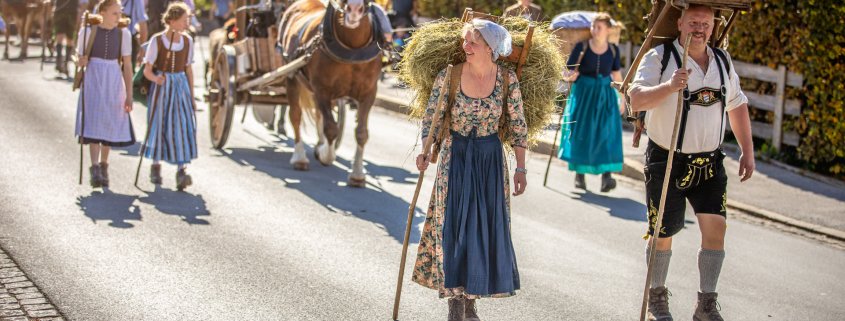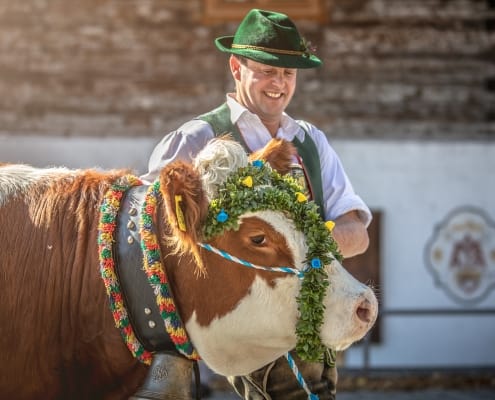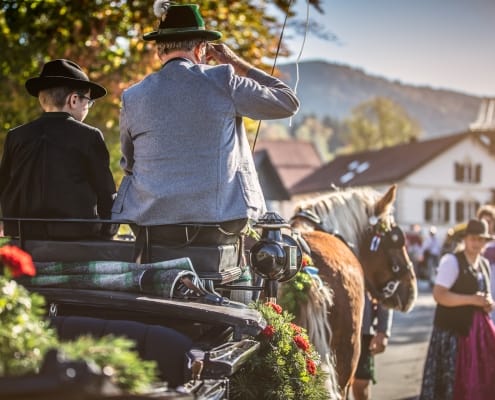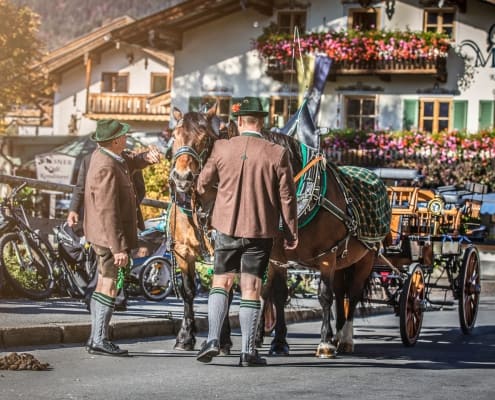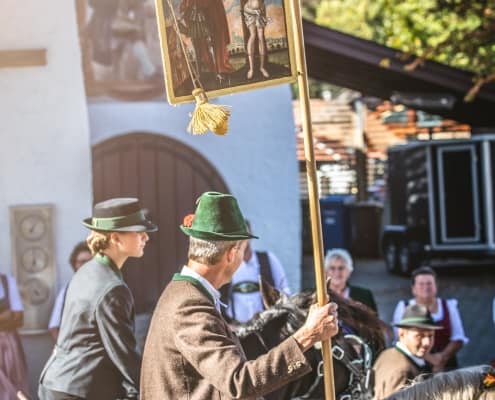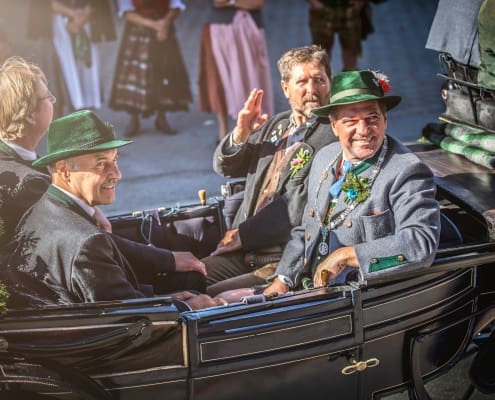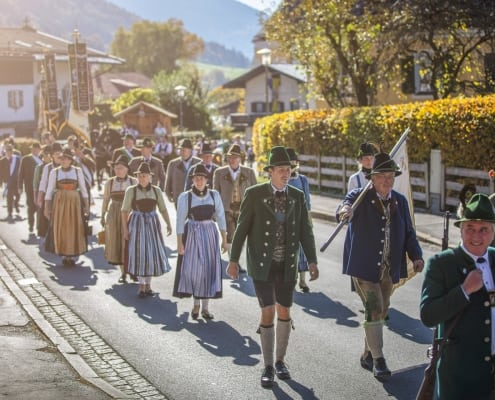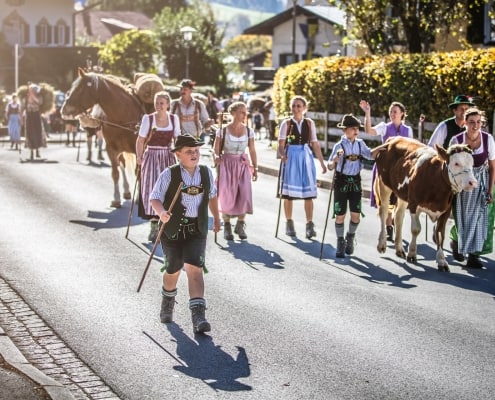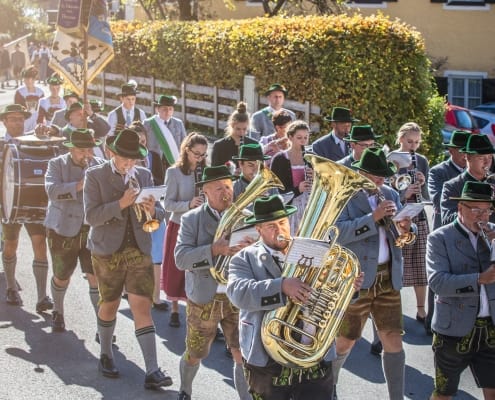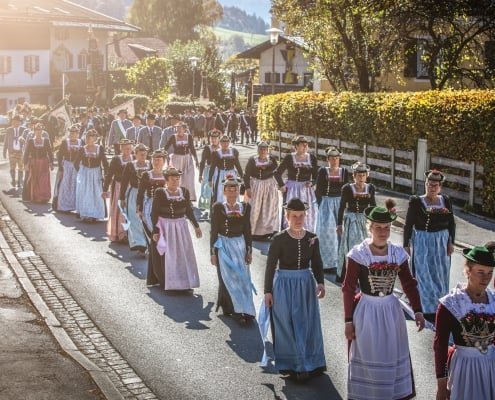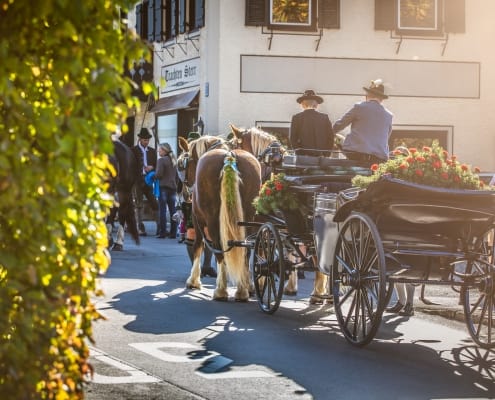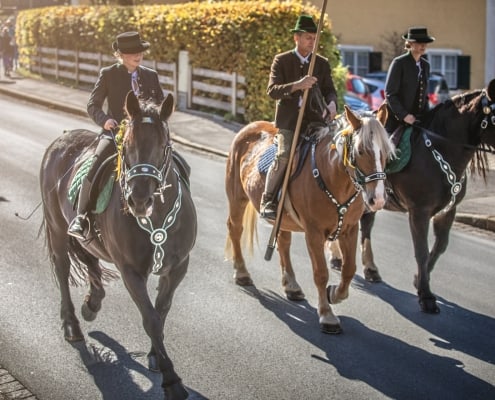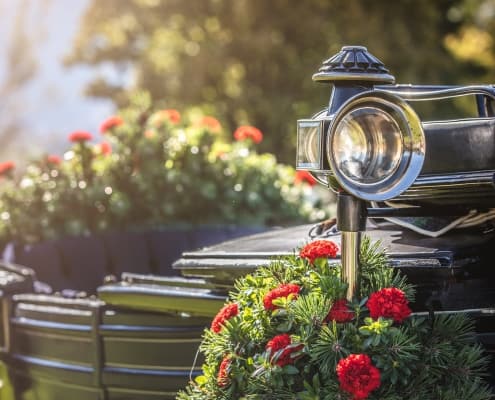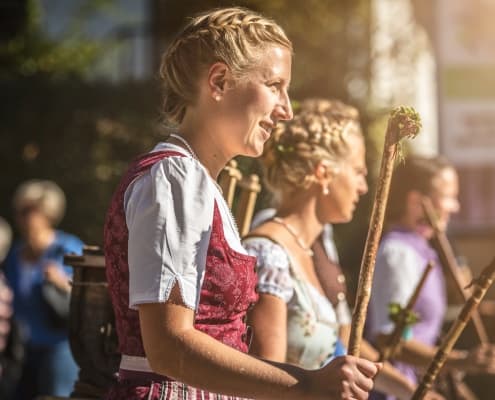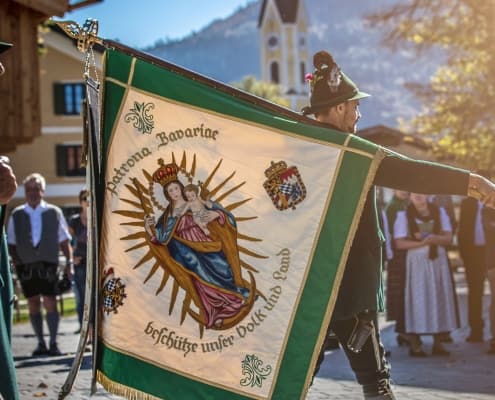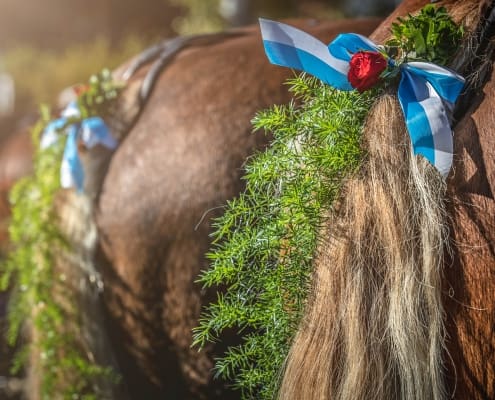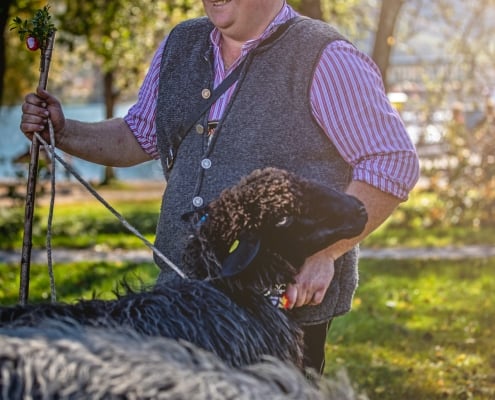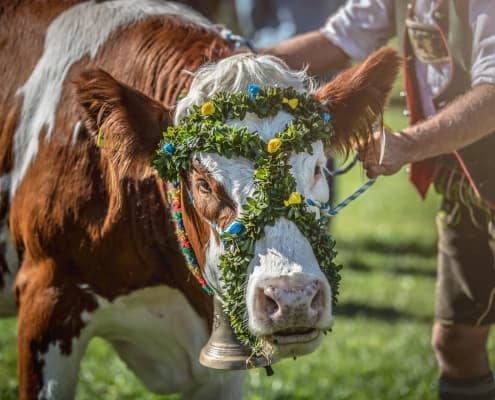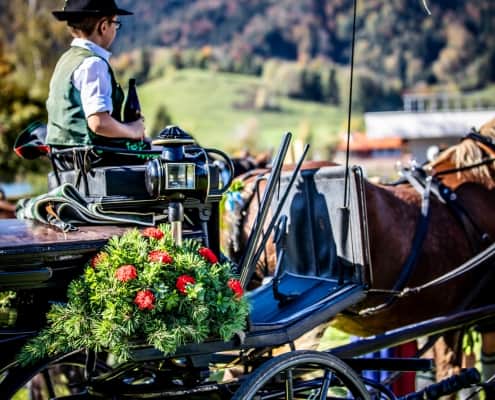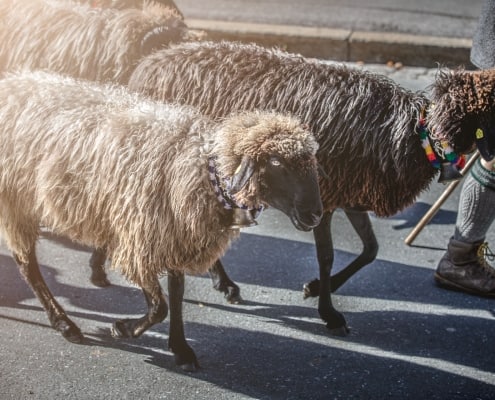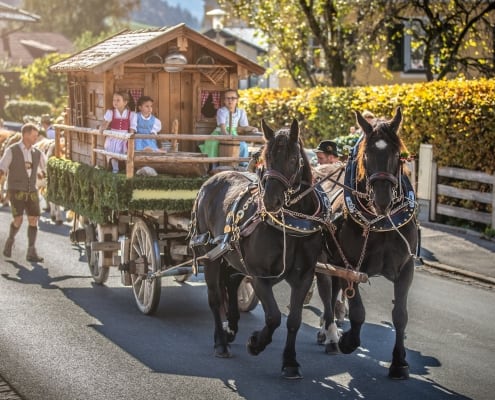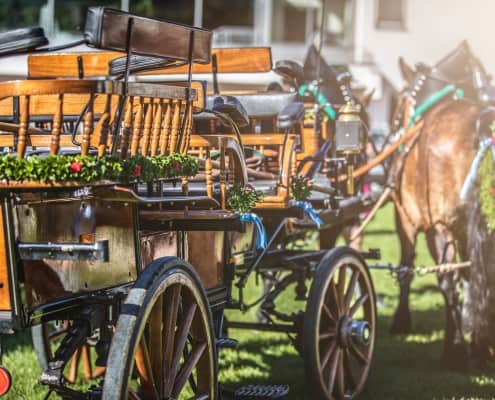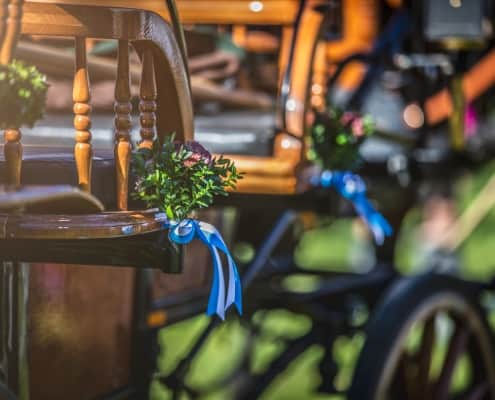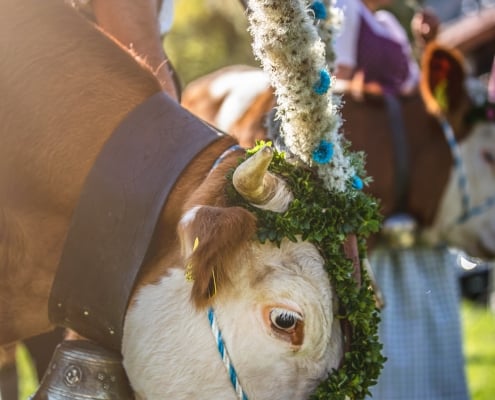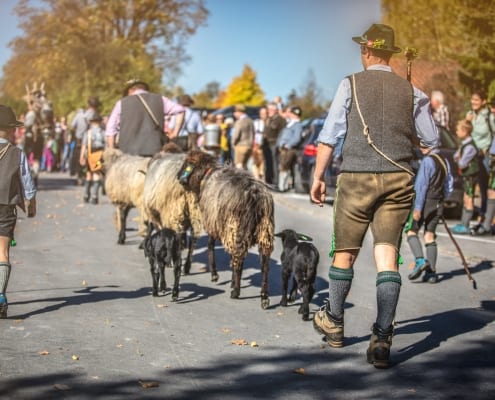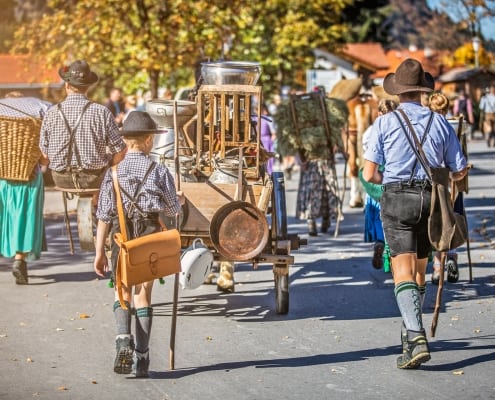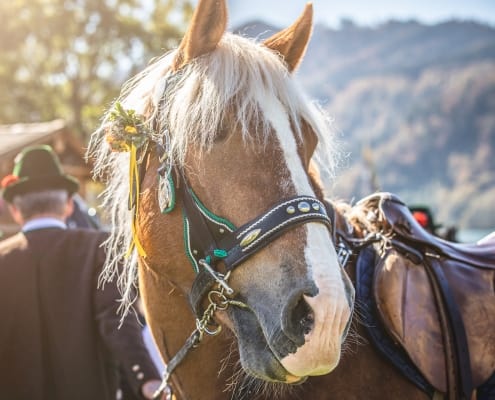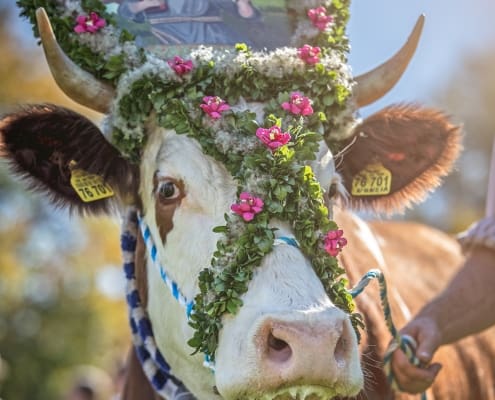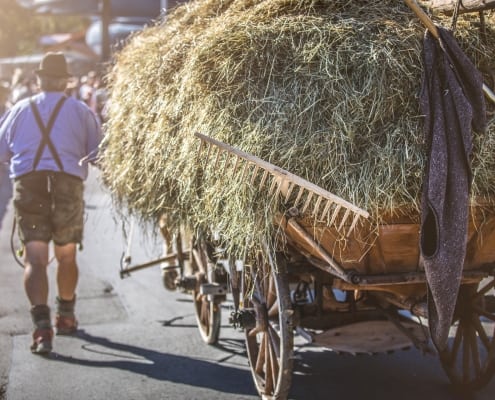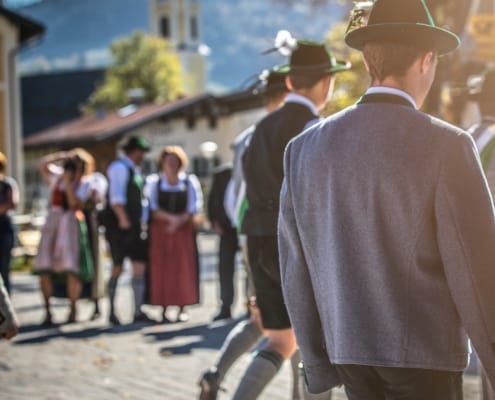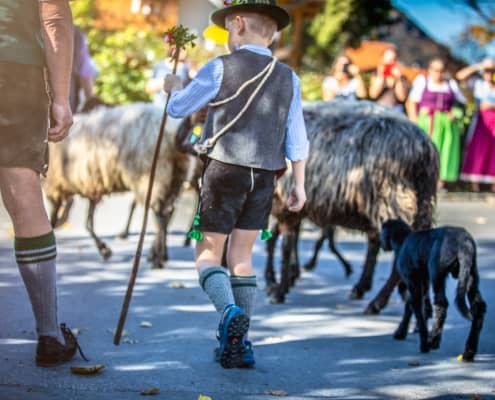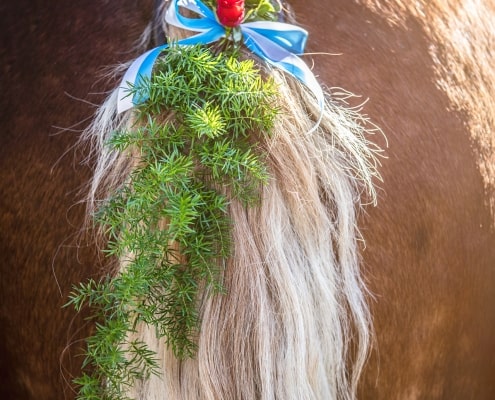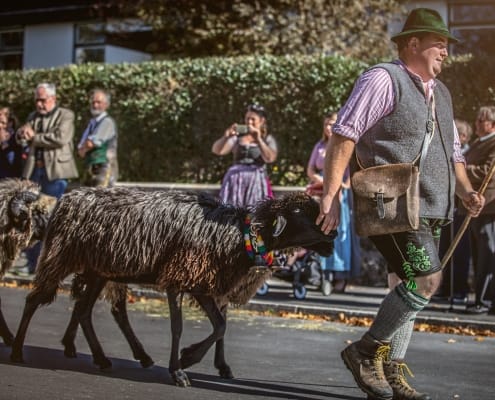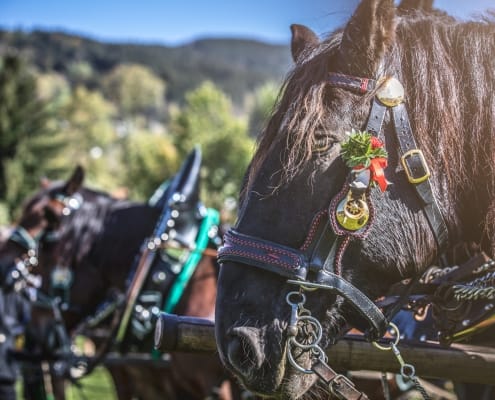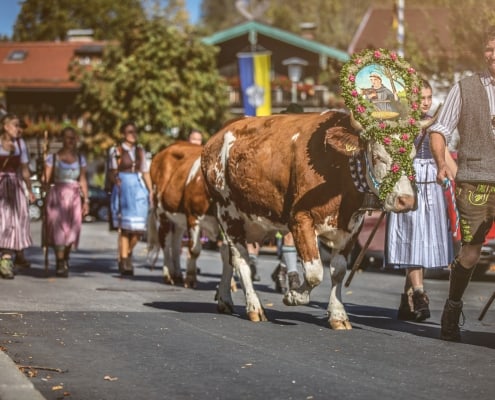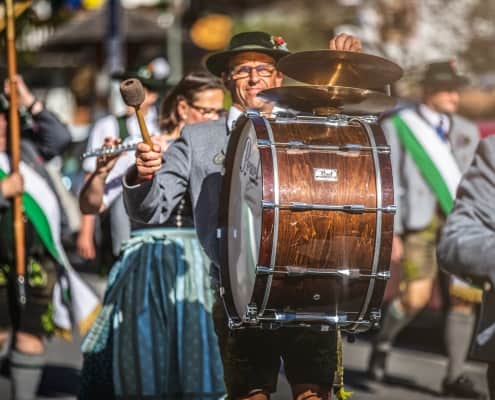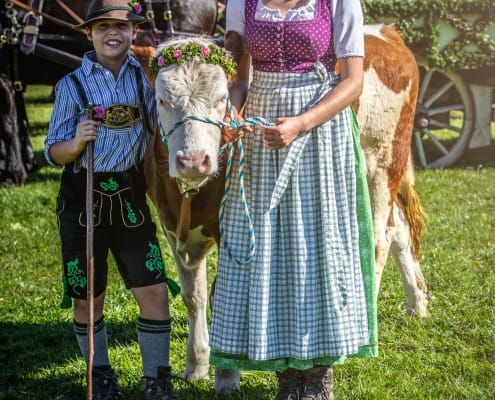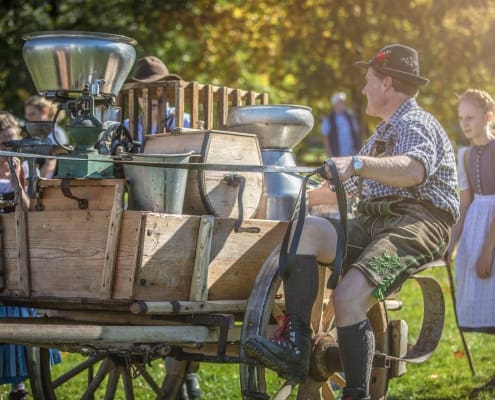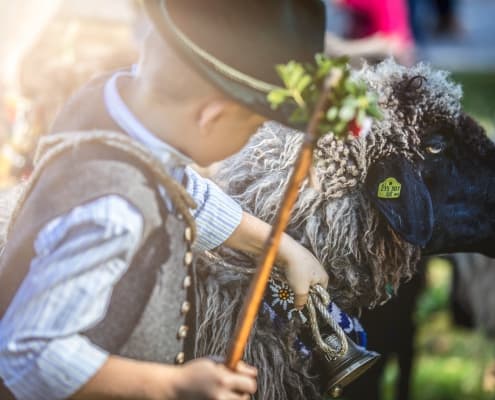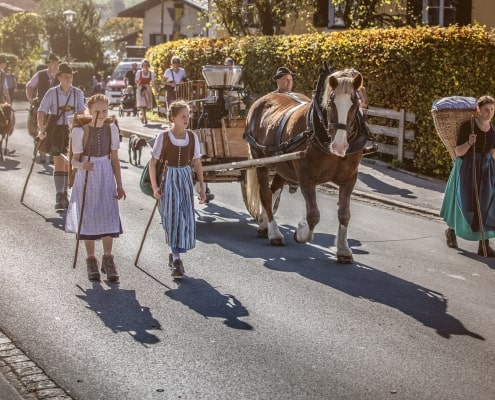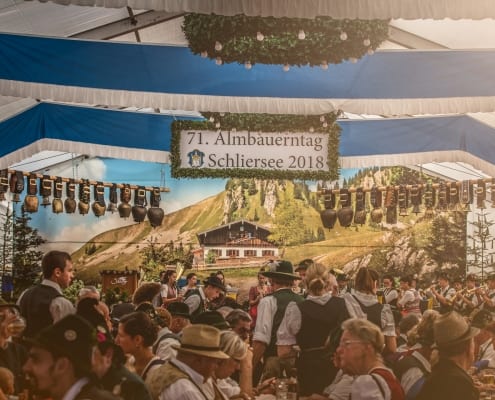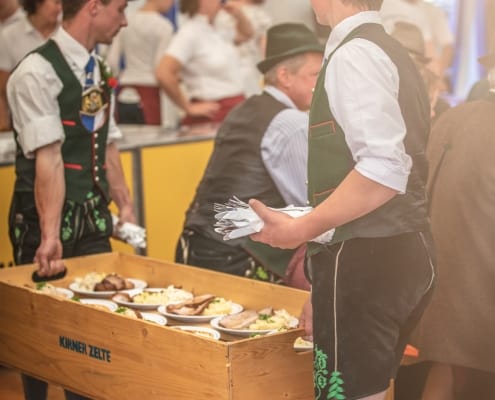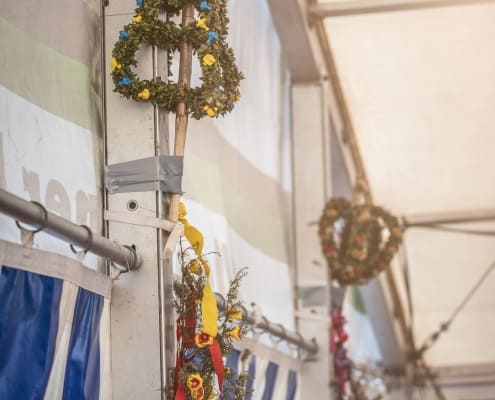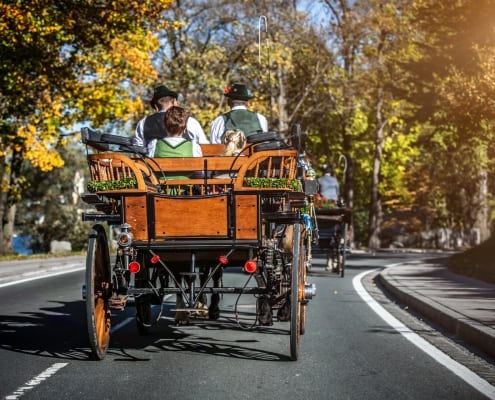Time Traveling in Schliersee at the Markus Wasmeier Freilichtmuseum with Irmi Baumann
Raus aus dem Alltag – rein in das Landleben, wie es einst war or Step back in time to experience country life as it use to be. This is the motto of the Markus Wasmeier Freilichtmuseum.
It was with this in mind, Irmi Baumann, museum guide invited myself and some close friends on a private tour in the final days before the season’s closing. Irmi is one of the museums guides who can speak english so for me it was a real treat.
On the day of our tour the village was blanketed in thick Autumn fog making it feel very much that the veil of time was thin and we could easily step through into the Bavarian farming past. Irmi explained to us that the historic village, which is composed of 12 buildings painstakingly disassembled and then reassembled, was the life long passion of two time olympic gold medalist Markus Wasmeier. He and his family work tirelessly to preserve traditions and customs of this beautiful valley and the local way of life.
Irmi shares this passion and from a very early age, always clung to the stories her grandparents told about life as it use to be. When things were more simple and unplugged. Each fact she shares with the visitor about the structures at the museum are peppered with mystical folklore and farming practicality.
On our tour we met a lovely local craftsman in the dying art of shingle making. He was covered in wood shavings and fragrant with the scent of tree sap as he busied himself at his work. He kindly paused a moment and explained to us about the “Schindel Dach” or Shingle roof. He explained it is traditional that all roofs are covered with 3 layers of shingles made of lark wood.
Each roof will last about 60 years. The long poles and large stones on the roves of typical alpine farmhouses are there to hold down the shingles and in winter when the snow is on the roof, this also serves as insulation.
Inside one of the cosy historic sitting rooms or Stube, we gathered around the Kachelofen or wood fired, tiled oven, which heats the house. On the day of our tour, light was in short supply and it was explained to us how beeswax candles were too expensive for every day use. In the 18 hundreds, the period of these buildings, a Kienspan was used. The Kienspan was a long shiv of resinous pine that would be clamped in a tall holder and lit, this would burn for hours.
There are endless stories to discover and exciting lessons to learn from the past.
For example, why are the thresholds are unusually high? Was it because people back then believed that evil spirits could not pass over them? Where did the four-poster beds come from and why didn’t people sleep lying down in their beds? Why the hearth fires were never allowed to die out?
You can learn so much and more like this, just give the museum a call and see if you can arrange and english tour for your next visit when the museum opens once more in spring 2019.
The Museum
https://www.wasmeier.de
The Guide
https://www.irmibaumann.de
American artist, photographer and professional wanderer who, after 20 years of roaming, put down roots in a 100 year old Bavarian farmhouse and fell in love with the Alpine village and its residents (both 2-legged and 4-legged).

